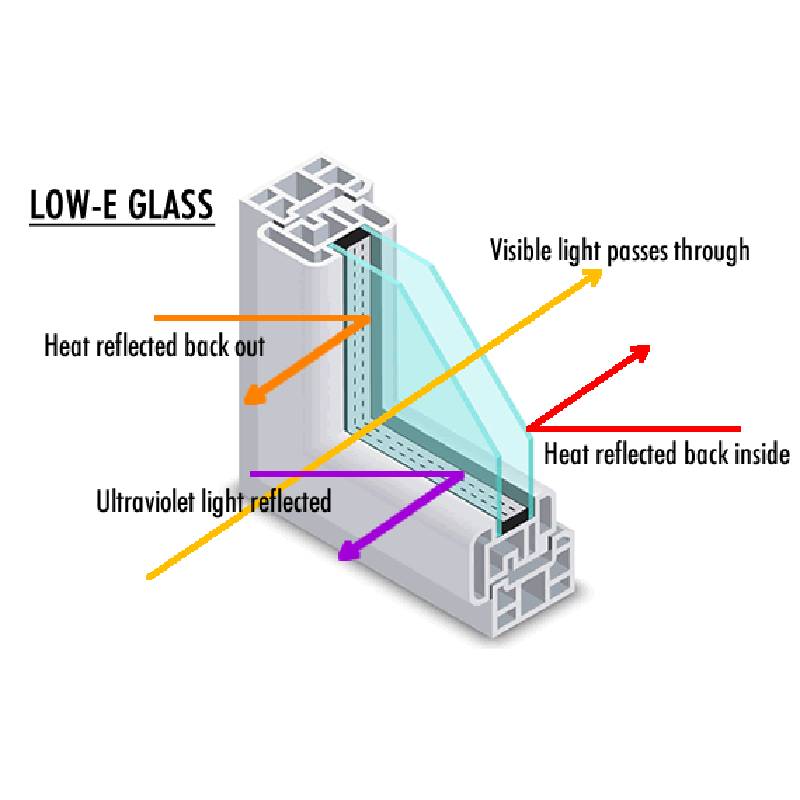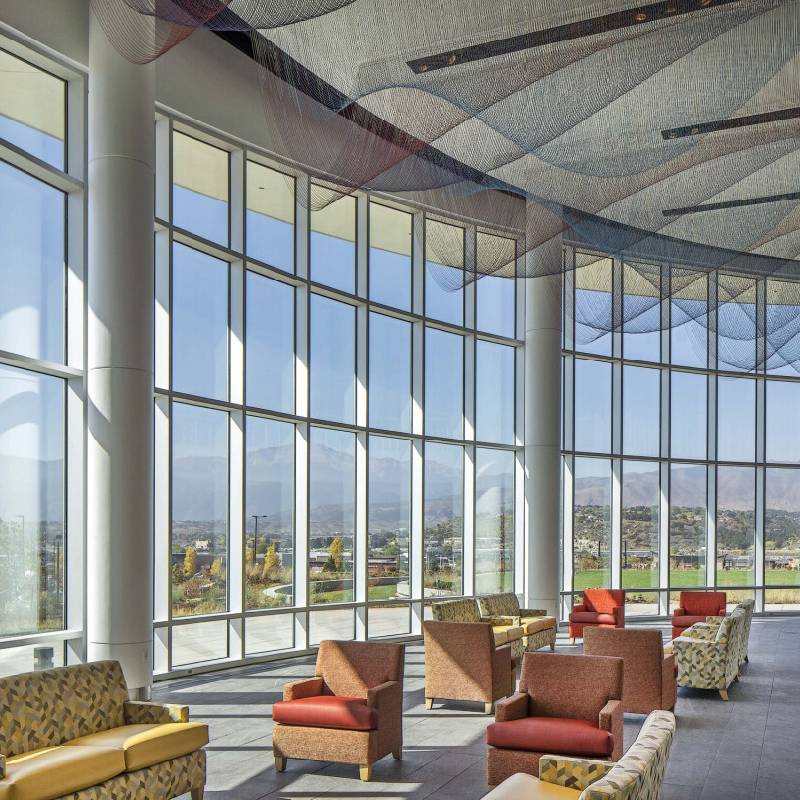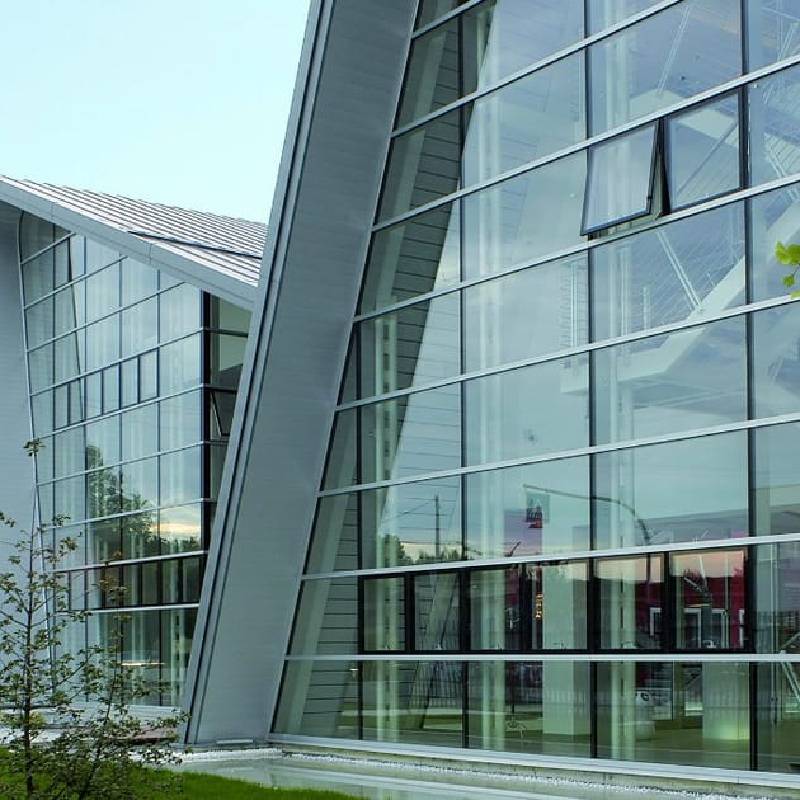

"Low-E Glass" refers to a range of high-performance, low-emissivity products manufactured utilizing state-of-the-art vacuum sputtering coating equipment.
The vacuum sputtering process coats glass surfaces with several layers of different materials. Among these, a silver layer effectively reflects infrared light while maintaining excellent thermal performance. Beneath the silver layer is an anti-reflective tin oxide (SnO2) base layer that increases the transparency of the glass. Above the silver layer is an isolating nickel-chromium (NiCr) alloy coating. The main function of the top anti-reflective tin oxide (SnO2) layer is to protect the other coating layers. This product offers high transparency, low reflectivity, superior thermal insulation and energy-saving properties required of modern architectural glass and green building design.
Near to the natural color of glass
Highly transparent to visible light (wavelength range: 380nm-780nm); the high reflectance of visible light will not produce significant glare.
Transmits most light in the visible range without altering its natural color. Provides excellent natural illumination and saves energy by reducing the need for artificial lighting. High reflectance of infrared radiation in particular (wavelength: 780nm-3,000nm). Reflects nearly all long-wave infrared radiation (wavelength greater than 3,000nm). Prevents the transmission of significant amounts of heat, resulting in the interior being comfortably cool in summer and warm in winter.
1.Residential buildings: Low-E glass is commonly used in residential properties for windows, doors, and skylights to improve energy efficiency, enhance comfort, and protect furnishings from UV damage.
2.Commercial buildings: Low-E glass is also used in commercial buildings such as offices, retail stores, and hotels to reduce energy costs, improve comfort, and create a sustainable environment.
3.Green buildings: Low-E glass is often specified in green building projects for its energy-saving benefits and contribution to LEED (Leadership in Energy and Environmental Design) certification.
4.Healthcare facilities: Low-E glass can be used in healthcare facilities to create a more comfortable and energy-efficient environment for patients and staff.


